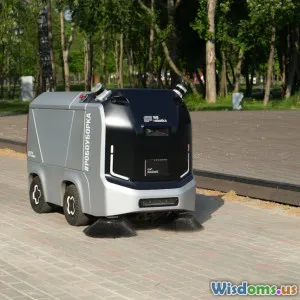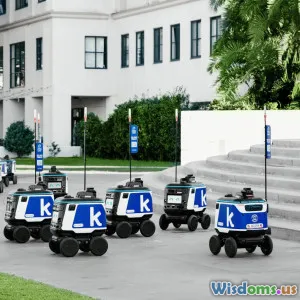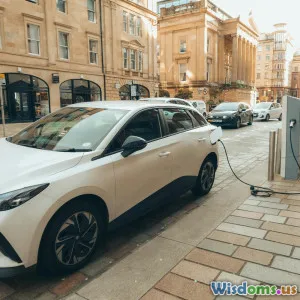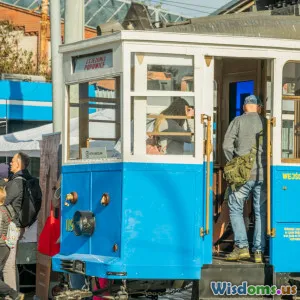
Smart City Transportation Strategies
7 min read Explore cutting-edge smart city transportation strategies enhancing urban mobility through innovation, sustainability, and technology. (0 Reviews)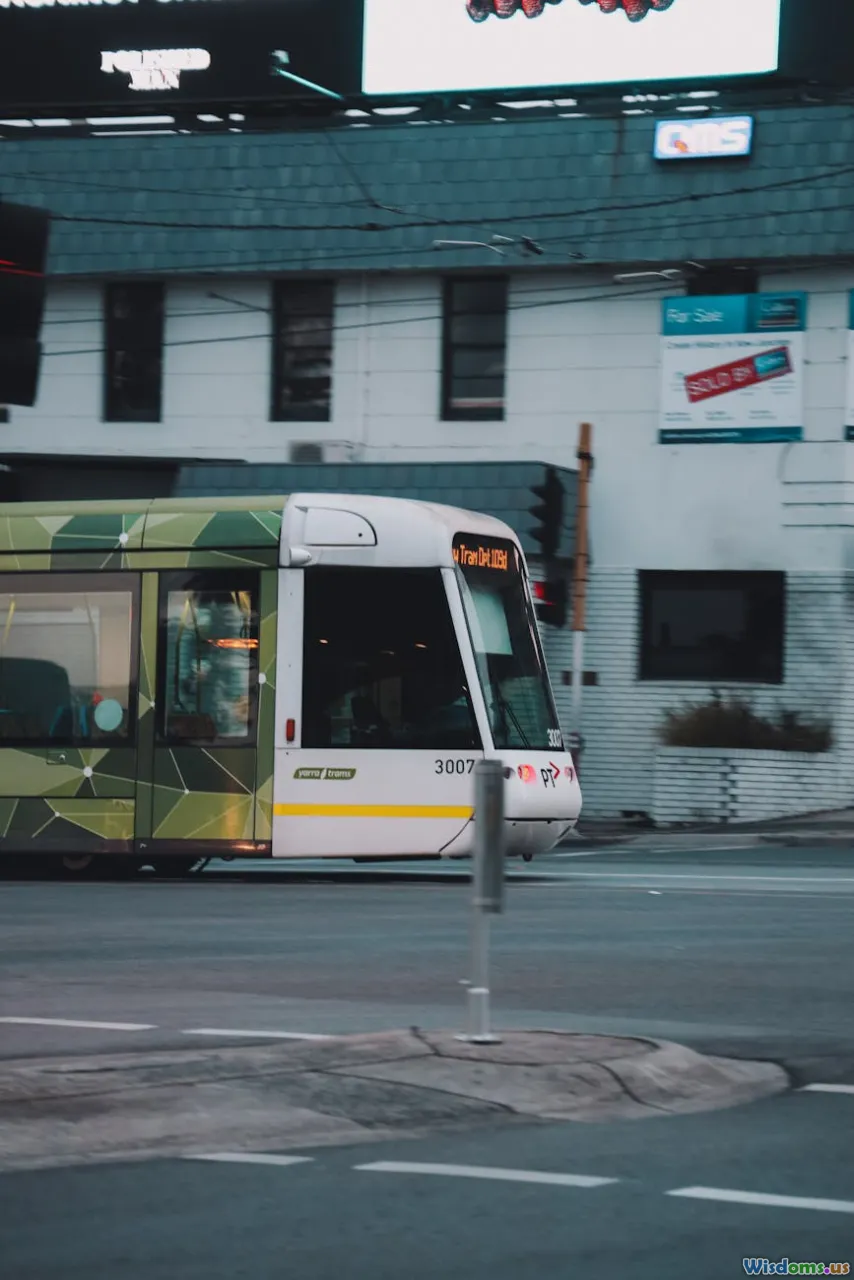
Smart City Transportation Strategies: Transforming Urban Mobility
Urban centers worldwide face mounting pressures stemming from population growth, traffic congestion, pollution, and inefficiencies in public transit. Emerging smart city transportation strategies are reshaping how people move, emphasizing sustainability, connectivity, and technology to craft efficient, safe, and accessible transit ecosystems. This article delves deeply into transformative methods enabling smarter transportation, backing concepts with data and real-life successes.
Introduction: The Urban Mobility Challenge
Cities today are at a crossroads. According to the United Nations, by 2030, 60% of the world’s population will live in urban areas, significantly increasing the demand for efficient transportation solutions. Traditional reliance on private vehicles has fueled congestion and environmental degradation, while aging infrastructure struggles to keep pace. The question facing planners and technologists is: how can we design transportation systems that are convenient, eco-friendly, and resilient?
Smart city transportation strategies represent the synergy between technologies like IoT (Internet of Things), AI (Artificial Intelligence), and big data with forward-thinking urban planning. Through interconnected infrastructure, data-driven decision-making, and citizen-centric policies, cities can dramatically enhance how people and goods move.
Key Components of Smart City Transportation Strategies
1. Intelligent Traffic Management Systems
One foundational component is intelligent traffic management. By deploying sensors, cameras, and communication networks, cities can dynamically adjust traffic signals based on real-time conditions. For example, Barcelona’s smart traffic lights reduce congestion by synchronizing green waves that adapt during peak hours.
According to the International Transport Forum, cities implementing adaptive traffic signal control have cut delays by up to 20%, notably decreasing emissions caused by idling vehicles.
2. Integrated Multimodal Transport Platforms
Smart transportation emphasizes seamless integration between different modes—for instance, combining buses, metros, bikes, and rideshares under one fare and information system. Singapore’s Journey Planner app exemplifies this strategy by providing real-time updates and personalized routing, helping commuters select optimal travel pathways depending on conditions or preferences.
Data shows that integrated mobility solutions can increase public transit ridership and reduce private vehicle use, critical to lowering urban carbon footprints.
3. Electrification and Sustainable Mobility
Transitioning to electric vehicles (EVs) is vital. Cities are expanding EV charging networks and encouraging e-bikes and scooters. Amsterdam leads with its ambitious EV infrastructure rollout supporting both private and shared mobility, contributing to a reported 25% fall in urban air pollutants over five years.
Beyond EVs, promoting walking and cycling through dedicated lanes and car-free zones fosters healthier, low-impact transit choices.
4. Autonomous and Connected Vehicles
Autonomous vehicles (AVs) are poised to reshape mobility. By reducing human error, AVs can make roads safer while optimizing flow. Additionally, V2X technology enables vehicles to communicate with each other and traffic infrastructure, enhancing predictive traffic management.
Waymo and Tesla's pilot programs in cities like Phoenix and San Francisco demonstrate the potential, but widespread AV integration requires infrastructure upgrades and clear regulatory frameworks.
5. Smart Parking Solutions
Smart parking apps that guide drivers toward available spots reduce circling traffic, a significant cause of congestion. San Francisco’s SFpark initiative resulted in a 30% reduction in time spent searching for parking, directly enhancing traffic conditions.
These applications often link with dynamic pricing strategies to maximize space utilization and encourage alternative transport during peak periods.
Real-World Insights: Cities Leading the Transformation
Copenhagen, Denmark
Famed for mobility innovation, Copenhagen’s approach combines robust cycling infrastructure with electrified public transit and smart traffic tech. With over 60% of residents commuting by bike daily, the city aims for carbon neutrality by 2025, showcasing how multi-faceted smart strategies drive sustainability.
Singapore
Singapore excels through its Smart Mobility 2030 blueprint, incorporating autonomous shuttle trials, comprehensive multimodal integration, and data analytics to enhance urban traffic flow. The Land Transport Authority reports a 15% rise in public transport usage since its launch.
Los Angeles, USA
While historically car-dependent, LA is aggressively implementing smart transportation via Adaptive Traffic Control Systems (ATCS), expanding its electric bus fleet, and integrating mobility-as-a-service (MaaS) platforms, striving to reduce greenhouse gas emissions by 80% by 2050.
Challenges and Considerations
While the promise is enormous, several challenges must be carefully navigated:
-
Data Privacy and Security: Handling vast amounts of transportation and personal data necessitates resilient cybersecurity measures.
-
Equity and Accessibility: Ensuring smart systems serve all demographics, including marginalized communities, avoids exacerbating inequalities.
-
Infrastructure Costs: Upfront investments for sensors, networks, and revamped transit can be substantial, calling for sustainable financing models.
-
Technology Adoption and User Behavior: Public acceptance and shifting habits require education and incentives.
Addressing these issues proactively ensures longevity and widespread benefits.
Conclusion: Paving the Road Ahead
Smart city transportation strategies are no longer futuristic concepts but urgent imperatives to manage urban growth sustainably. By harnessing data-driven infrastructure, sustainable transport modes, and emerging tech such as autonomous vehicles, cities can reduce congestion, cut emissions, and improve citizens’ quality of life.
The successful implementation of these strategies depends on holistic planning, collaboration across public and private sectors, and active community engagement. For urban dwellers worldwide, smarter transportation spells more than convenience—it’s a pathway to healthier, more vibrant cities.
As urban areas continue to evolve, embracing intelligent transportation solutions is key to ensuring that our cities remain connected, efficient, and livable for generations to come.
Rate the Post
User Reviews
Popular Posts













